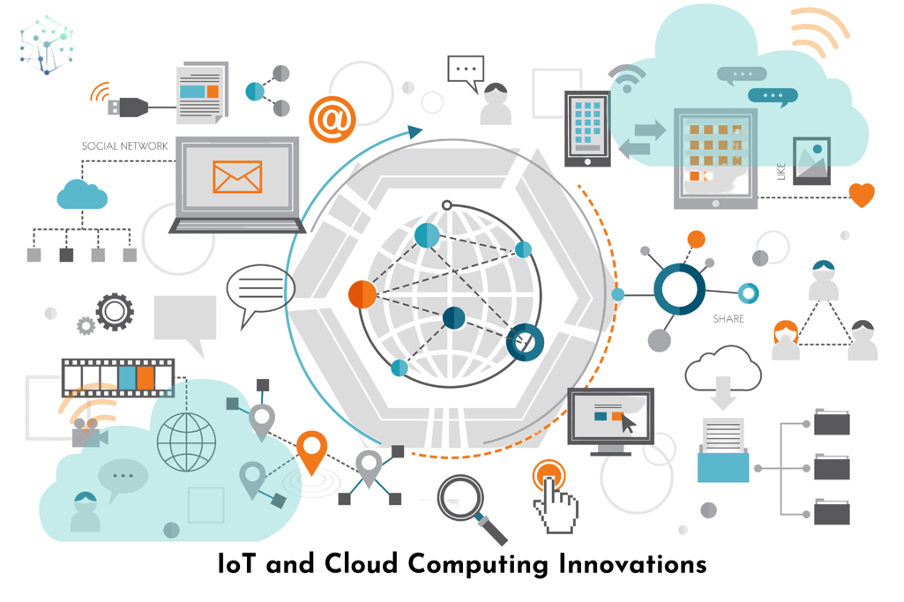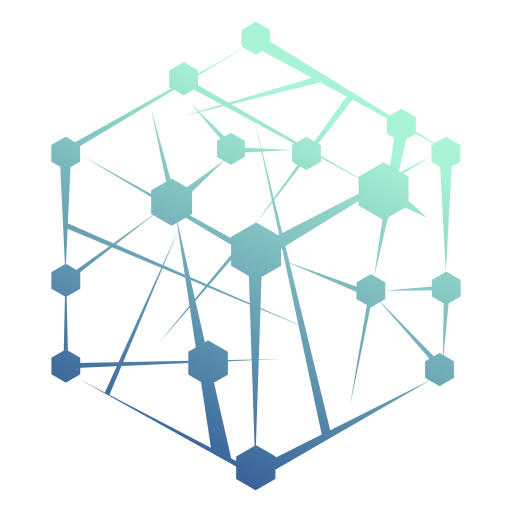2023's Dynamic Partnership: IoT and Cloud Computing Innovations for Tomorrow's World

Introduction to IoT and Cloud Computing Innovations
As we approach 2023, the world is witnessing a paradigm shift in technology, as the integration of the Internet of Things (IoT) and cloud computing is reshaping the way we connect, interact, and make decisions. Cloud computing has become the backbone of the digital era, enabling businesses to store, manage, and access vast amounts of data efficiently and securely. On the other hand, IoT has revolutionized our daily lives by connecting billions of devices to the internet, transforming the way we communicate, work, and live.
In this article, we will delve into the growing importance of IoT and cloud computing, explore their key benefits, and discuss the future trends and predictions in this exciting domain.
The Growing Importance of IoT and Cloud Computing
The rapid advancement of technology has led to the proliferation of IoT devices, which are expected to exceed 50 billion by 2023. This massive surge in connected devices has created an urgent need for efficient data storage and processing solutions, and cloud computing has emerged as the optimal choice for handling the complex requirements of IoT.
Cloud computing enables businesses to harness the power of IoT by providing scalable, on-demand computing resources and services. This not only reduces the cost of infrastructure and maintenance but also ensures seamless collaboration and data sharing among connected devices. The combination of IoT and cloud computing is transforming industries by enabling new business models, streamlining processes, and driving innovation.
Key Benefits of IoT and Cloud Computing Integration
Scalability and Flexibility
One of the most significant advantages of integrating IoT and cloud computing is the ability to scale and adapt as per the evolving needs of a business. With cloud computing, businesses can quickly adjust their computing resources, storage capacity, and services as the number of IoT devices and data volume grows. This is particularly beneficial for organizations that experience fluctuating workloads or require additional resources during peak times.
Enhanced Data Management and Analytics
IoT generates a vast amount of data that needs to be stored, processed, and analyzed to derive valuable insights. Cloud computing provides efficient data management solutions, such as data lakes and big data platforms, that can handle the large-scale data generated by IoT devices. Moreover, cloud-based analytics tools enable businesses to gain real-time insights, predict trends, and make informed decisions.
Cost-Effectiveness
Integrating IoT with cloud computing can significantly reduce the cost of infrastructure, maintenance, and IT support. Businesses can leverage cloud-based services and pay for only the resources they use, avoiding upfront investments and reducing the total cost of ownership. Additionally, cloud computing allows organizations to focus on their core competencies, rather than managing complex IT systems.
IoT Cloud Platforms and Providers
Major IoT Cloud Platforms
Several IoT cloud platforms have emerged to cater to the growing demand for IoT and cloud integration. These platforms provide a comprehensive suite of tools and services that enable businesses to build, deploy, and manage IoT applications in the cloud. Some of the major IoT cloud platforms include AWS IoT, Microsoft Azure IoT, Google Cloud IoT, and IBM Watson IoT.
Choosing the Right IoT Cloud Provider
Selecting an IoT cloud provider is a critical decision for businesses, as it can significantly impact the success of their IoT initiatives. Businesses should consider factors such as the provider's scalability, security, support for multiple protocols, and integration with existing systems. Additionally, the cost of services, ease of use, and availability of advanced analytics tools should also be taken into account.
Big Data and IoT Cloud-Based Services
The integration of IoT and cloud computing has led to the emergence of big data and IoT cloud-based services, which are transforming industries by enabling data-driven decision-making and innovative solutions. These services include cloud-based data storage, big data analytics, machine learning, and artificial intelligence, among others.
Cloud-Based Data Storage
IoT devices generate a massive volume of data that needs to be stored and managed efficiently. Cloud-based data storage solutions, such as data lakes and object storage, provide scalable and cost-effective options for storing and retrieving IoT data. These solutions ensure that data is readily available for processing and analysis, enabling businesses to derive insights and make informed decisions.
Big Data Analytics
IoT and cloud computing have enabled the development of advanced big data analytics tools that can process and analyze large-scale data generated by connected devices. These tools provide real-time insights, predictive analytics, and trend analysis that help businesses optimize operations, reduce costs, and enhance customer experiences.
Fleet Management and IoT Cloud Computing
Fleet management is one of the industries that has greatly benefited from the integration of IoT and cloud computing. IoT cloud computing has enabled the development of advanced fleet management solutions that leverage real-time data from connected vehicles and cloud-based analytics tools to optimize fleet operations, reduce costs, and improve safety.
Real-Time Monitoring and Analytics
IoT cloud computing allows fleet managers to monitor their vehicles in real-time, track their location, and access vital information such as fuel consumption, engine performance, and driver behavior. Cloud-based analytics tools can process this data to identify trends, predict maintenance requirements, and optimize routing, resulting in significant cost savings and operational efficiency.
Enhanced Safety and Compliance
IoT cloud computing solutions enable fleet managers to ensure the safety of their drivers and vehicles by monitoring driver behavior, identifying potential risks, and implementing preventive measures. Additionally, cloud-based fleet management systems can help businesses comply with regulatory requirements by automating processes such as reporting and record-keeping.
Data Center and Edge Computing in IoT and Cloud
As the number of IoT devices continues to grow, data centers and edge computing are becoming increasingly important in the IoT and cloud computing landscape. These computing models help businesses address the challenges of latency, bandwidth, and data processing in IoT environments.
Data Center Computing
Data center computing involves processing and storing data in centralized data centers, which are connected to IoT devices through the cloud. This model enables businesses to manage large-scale data and leverage cloud-based services for storage, processing, and analytics. However, data center computing can be resource-intensive and may not be suitable for time-sensitive or mission-critical applications.
Edge Computing
Edge computing addresses the limitations of data center computing by processing data closer to the source, i.e., at the edge of the network. This reduces latency, conserves bandwidth, and improves response times in IoT environments. Edge computing is particularly beneficial for applications that require real-time processing, such as autonomous vehicles and industrial automation.
Hybrid Cloud Solutions for IoT and Cloud Computing
A hybrid cloud solution combines the advantages of both public and private cloud environments, providing businesses with the flexibility, scalability, and security required for IoT and cloud computing initiatives. Hybrid cloud solutions enable organizations to store sensitive data on private clouds while leveraging the cost-effectiveness and scalability of public clouds for application development and deployment.
Benefits of Hybrid Cloud Solutions
Hybrid cloud solutions offer several benefits for IoT and cloud computing, including:
Enhanced Security: Private clouds provide higher levels of security and control, ensuring that sensitive data is protected from unauthorized access.
Cost-Effectiveness: Hybrid cloud solutions enable businesses to optimize costs by utilizing public cloud resources for non-sensitive workloads and private clouds for sensitive data and mission-critical applications.
Scalability and Flexibility: Hybrid cloud solutions allow organizations to scale their computing resources and services as per their requirements, ensuring that they can accommodate the growing demands of IoT and cloud computing.
Security and Privacy Concerns in IoT and Cloud Integration
The integration of IoT and cloud computing raises several security and privacy concerns, as the large-scale data generated by connected devices is vulnerable to cyberattacks and unauthorized access. Businesses must address these challenges by implementing robust security measures and adhering to best practices in IoT and cloud computing.
Security Measures
Some of the essential security measures for IoT and cloud computing include data encryption, secure communication protocols, and access control mechanisms. Additionally, businesses should ensure that their IoT devices and cloud infrastructure are regularly updated and patched to protect against emerging threats.
Privacy Considerations
Protecting user privacy is a critical aspect of IoT and cloud computing, as the data generated by connected devices can reveal sensitive information about individuals and their activities. Businesses should implement privacy-preserving techniques, such as anonymization and data minimization, to mitigate the risks associated with privacy breaches.
Future Trends and Predictions for IoT and Cloud Computing
As we look towards the future, several trends and predictions indicate that IoT and cloud computing will continue to reshape industries and drive innovation. Some of these trends include:
The Rise of AI and Machine Learning: The integration of artificial intelligence (AI) and machine learning in IoT and cloud computing will enable businesses to develop intelligent applications that can learn from data, predict outcomes, and make autonomous decisions.
5G and Enhanced Connectivity: The deployment of 5G networks will significantly improve the speed, capacity, and reliability of IoT and cloud computing applications, facilitating the development of advanced solutions such as autonomous vehicles and smart cities.
The Evolution of Edge Computing: The continued growth of IoT devices and the need for real-time processing will drive the adoption of edge computing, enabling businesses to process data closer to the source and improve response times.
Conclusion
The dynamic partnership between IoT and cloud computing is reshaping industries and paving the way for a smarter, more connected world. As we approach 2023, businesses must embrace the integration of IoT and cloud computing to harness the power of connected devices, derive valuable insights from data, and drive innovation across various sectors. By leveraging the benefits of IoT and cloud computing, organizations can not only optimize their operations and reduce costs but also develop innovative solutions that create new opportunities and enhance the quality of life for people around the world.
